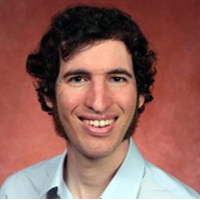
researcher and physicist David
Rubin.
Florida State University researcher David Rubin is part of a team that discovered three new exploding stars — or supernovae — using the NASA/ESA Hubble Space Telescope.
The light from these exploding stars can help illuminate dark matter in space, paving the way for scientists to test the most precise map to date of galaxy clusters and the matter within them.
Rubin, a physicist, said this is possible because the galaxy clusters act almost as a cosmic lens. The gravity field of the clusters bends light as it passes through. That effect, called gravitational lensing, makes distant objects that might be too faint to be seen otherwise larger and brighter.
“These clusters of galaxies are so massive that the gravity distorts and magnifies background objects as light passes by,” Rubin said.
Two teams working independently simultaneously confirmed the existence of these new exploding stars.
Rubin was part of a team called the Supernova Cosmology Project, housed at Lawrence Berkeley National Laboratory. Their work is featured in the May edition of the Monthly Notices of the Royal Astronomical Society.
An openaccess version of the article isavailable in DigiNole Commons, Florida State’s institutional repository.
The other research group, the Cluster Lensing And Supernova survey with Hubble, published a separate paper in the May issue of The Astrophysics Journal.
Rubin and his colleagues, led by Jakob Nordin, a scientist at the Lawrence Berkeley National Laboratory, began searching for these supernovae using the Hubble Space Telescope.
After Nordin completed most of the original searching using the telescope, Rubin began calculating how bright the exploding stars were, which can tell scientists how much the clusters of galaxies were magnifying them.
The Hubble Telescope is the world’s largest, most versatile space telescope that was carried into orbit in 1990 and remains operational. The Space Telescope Science Institute, located at Johns Hopkins University, is responsible for the scientific operation of the telescope and transmitting data to scientists who apply to use the telescope.
Each day the telescope generates enough data — 3 to 4 gigabytes — to fill six CD-ROMs.




